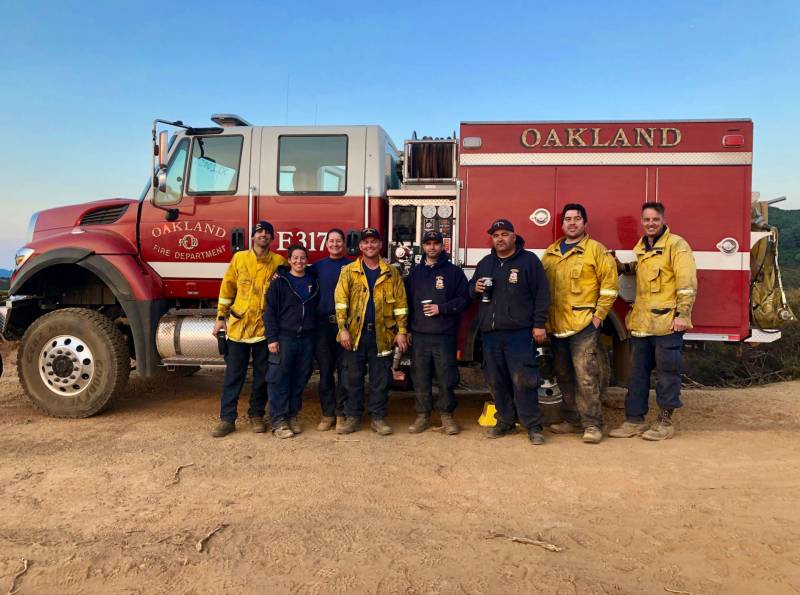In recent years, Foley, 51, has gotten used to being deployed for weeks at a time, fighting some of the state's biggest and most destructive blazes, often having to hit the road with his Oakland engine crew within an hour of getting the call.
That experience includes the 2018 Camp Fire, which incinerated most of the northern California town of Paradise, killing 85 people.
“Having to do two-plus weeks of search and recovery efforts after two days of fighting fire is something I hope I never have to do again,” he said.
But despite the physical and emotional toll of the work, Foley, who has two young children, said he looks forward to heading into the wild.
“I love going out there. It’s just a whole different world — the challenge, it's just a totally different playing field,” he said. “And then also it's just an interesting opportunity to go help communities in need that you didn't even know were on the map.”
California’s fire season started alarmingly early this year, thanks to intensely dry conditions and a barrage of lightning strikes in mid-August that ignited hundreds of blazes across the state. By the first week of October, flames had charred a record 4 million acres — more than double the area that burned all of last year — with about two months still left to go in the season. That unprecedented early onslaught of huge, simultaneous blazes, coupled with COVID-19 restrictions that have sidelined many inmate firefighter crews and other first responders, are stretching the state’s emergency resources.
“Definitely the drawdown of resources was extraordinarily apparent,” Foley said of his recent stint on the SCU Complex. “You know, a fire of that size by itself would probably have 3,000 people or more, and there were less than 2,000. So, with resources being spread so thin, it was very complicated because we just don't have the ability to move as quickly as you might under different circumstances.”
For mutual aid assistance, the Oakland Fire Department deploys up to five of its engines, with 25 firefighters and command staff at any one time. This season, Foley said, the department has consistently “maxed out” its resources, with crews currently deployed to four fires around the state, including the Glass Fire in North Bay.
